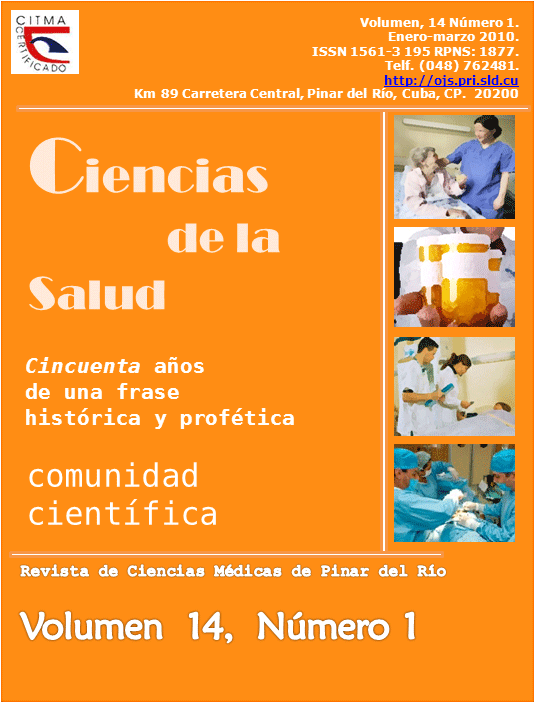Vaginal abnormality: an interesting case report
Abstract
Uterovaginal malformations (UVM) are due to an alteration in the process of embryogenesis of the female reproductive system. The imaging has a very important role during initial studies of these abnormalities; magnetic resonance imaging has significant advantages in non-invasive studies with a sensitivity of almost 100%. Hysterosalpingography is the classic technique to the study of UVM that provides information about cervical, endometrial canals and tubal permeability. The usefulness of the transabdominal imaging in the management of a UVM and main complications was showed when presenting a case of a 12 years old patient attending to the office with high fever, hypogastric pain and oliguria/dysuria without menarche. At physical examination a suprapubic tumor was palpated, a perineal dome, a non-tunneled hymen, facial edema and hypertension were observed. Imaging revealed a moderate dilatation of the excretory systems in both kidneys, vesical cavity was notable distended, visualizing a retrovesical hypoecoid mass in the right iliac fossa, without septa or contents related to a hematometra due to an imperforate hymen provoking bilateral obstructive hydronephrosis which led to a urinary retention of acute renal failure. Surgical correction of the UVM was carried out having a satisfactory imaging-clinical progression.Downloads
References
1. Pereiro Carbajo A, Corral Rivadulla RA. Ortiz Terán L, Martín Martínez L, Romero Aresté G, Lázaro González V et al. Malformaciones uterovaginales asociadas a anomalías de los conductos de Muller. (A propósito de un caso). Rev chil obstet Ginecol. 2003; 68(3): 229-234.
2. Oriuela Rodríguez C, Malo Rodríguez G, Valero Pulido JC. Agenesia renal en niñas y alteraciones congénitas del tracto genital. Reporte de 3 casos. Urología Colombiana. Reporte de casos. Actas Urol Col .2008;(4):51-55
3. Vazques Pizaña E, Rojo Quiñones AR, Vargas Salazar OE, Gómez Rivera N, López Cervantes G. Malformaciones del aparato genital femenino en la adolescencia. Bol Clin Hosp. Infant Edo Son. 2006; 23(2): 57-63
4. Trejo EC, Carranza LS. Malformaciones congénitas del aparato reproductor. En: Trejo EC, Carranza LS. Manual de normas y procedimientos en ginecología .Luis Castelazo Ayala; 2005.Pp. 1103.
5. Scott W. Atlas, MD. RM de cabeza y columna. Marban; 2004.
6. Escobar ME, Gryngarten M, del Rey G, Boulgourdjian E, Keselman A, Martínez A et al. Síndrome de Rokitansky (agenesia úterovaginal): aspectos clínicos, diagnósticos y terapéuticos. Arch Argent Pediatr. 2007; 105(1):25-31
7. Stoisa D, Armas D, Lucena ME, Staffieri R. Villavicencio RL. Síndrome de Wünderlich. Útero didelfo, hemivagina ciega y agenesia renal homolateral. Puesta al día. Anuario Fundación Dr. J. R. Villavicencio. 2005; (13):177-181.
8. García Reymundo M, Hidalgo-Barquero del Rosal E. Dolor abdominal recurrente secundario a hematocolpos.Revista Pediatría de Atención Primaria. 2008;(2) 2
9. Zuccardi L, Bou-Khair RM, Gringarten M, Graciano G, Escobar de Lázari ME. Endometriosis en la etapa infanto-juvenil: presentación de nueve casos en un hospital pediátrico. Arch Argent Pediatrir. 2007; 105(4): 328-332
10. Bernadá M, Pereda M, Fernández A, Russomano F. Infección urinaria en niños: evaluación imagenológica. Rev Med Uruguay octubre. 2005; 21: 222-230.
11. Ramírez T, Aldunate M, Wensioe K. Presentación atípica de hematometrocolpos. Caso clínico. Resumen XXXV Congreso Chileno de Cirugía Pediátrica. Disponible en: Rev. Ped. Elec. [en línea] 2008; 5 (2) http://www.revistapediatria.cl/vol5num1/pdf/9_CRONICA_2.pdf
12. Ossandón F, Pobrete M. Abdomen agudo por obstrucción vaginal con genitales externos normales. Resumen Congreso Chileno de Cirugía Pediátrica Rev. Ped. Elec. [en línea] 2006; 3 (3). http://www.revistapediatria.cl/vol3num3/pdf/1_Editorial_dr_diaz.pdf
13. Ossandon Correa F, Martínez del Río A, Izzo Sander C. Malformaciones obstructivas congenitas de los genitales femeninos. 5 casos clínicos. Rev. Chilena de Pediatria .1975; 46 (2):135.
14. M. Jiménez Villodres, P. Galindo, M. E. Palacios, C. Asensio. Insuficiencia renal en el síndrome de Rokitansky. Nefrología. 2004; 24 (3): 300-301.
Published
How to Cite
Issue
Section
License
Authors who have publications with this journal agree to the following terms: Authors will retain their copyrights and grant the journal the right of first publication of their work, which will be publication of their work, which will be simultaneously subject to the Creative Commons Attribution License (CC-BY-NC 4.0) that allows third parties to share the work as long as its author and first publication in this journal are indicated.
Authors may adopt other non-exclusive license agreements for distribution of the published version of the work (e.g.: deposit it in an institutional telematic archive or publish it in a volume). Likewise, and according to the recommendations of the Medical Sciences Editorial (ECIMED), authors must declare in each article their contribution according to the CRediT taxonomy (contributor roles). This taxonomy includes 14 roles, which can be used to represent the tasks typically performed by contributors in scientific academic production. It should be consulted in monograph) whenever initial publication in this journal is indicated. Authors are allowed and encouraged to disseminate their work through the Internet (e.g., in institutional telematic archives or on their web page) before and during the submission process, which may produce interesting exchanges and increase citations of the published work. (See The effect of open access). https://casrai.org/credit/



